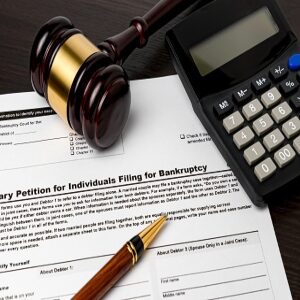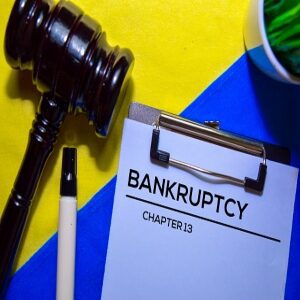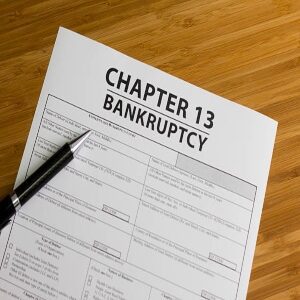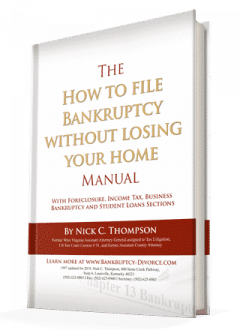This is the technical discussion of getting a Chapter 13 hardship discharge in Bankruptcy. However, you may refer to Early Chapter 13 Bankruptcy Discharge if you are a client. Often a Debtor is in the process of losing a job or becoming disabled. The Debtor may need the protection and benefits of Chapter 13. But, completing even a modified plan with lower payments might not be possible due to a disability, death, or divorce. The Debtor may still need to start a Chapter 13 for immediate protection from unsecured creditors and convert it or obtain an early discharge in a Chapter 13 later.
Through no fault of their own, a Debtor might have health problems and later needs to include medical and priority debts. Sometimes converting to a Chapter 7 is best, or there is also an early or hardship discharge when you cannot complete a plan.
Thankfully, the Debtor can file a Chapter 13 and obtain the early hardship discharge or convert to a Chapter 7. It allows the Debtor to file and immediately get the protection they need but delay discharge until required. Often the early discharge is necessary if the Debtor becomes disabled.
Obtaining a Chapter 13 Early Hardship Discharge in Bankruptcy
If a Chapter 13 does not work out you can often convert the case to a Chapter 7. Medical bills that incurs after filing a Chapter 13 can be added to the petition, and you are often able to discharge those medical and unsecured debt later by conversion to a Chapter 7. Debts incurred such as medical bills can be included in the bankruptcy discharge of the Chapter 7.
Also, Chapter 13 debtors can ask for an early financial hardship discharge in a 13 when the bankruptcy court grants a motion under 11 USC §1328(B), and the following is true:
- The Debtor’s failure to complete payments is due to circumstances beyond the Debtor’s control through no Debtor’s fault.
- According to the bankruptcy code, unsecured creditors receive at least as much as they received in a Chapter 7 liquidation case.
- Modification of the repayment plan is not possible.
What Are The Three Types Of Chapter 13 Plans And Discharges?
A discharge is the permanent bankruptcy court order at the end of the personal bankruptcy case, preventing creditors from collection. A dischar
- Nonexempt property you must repay what a 7 would,
- You must repay your disposable income, and
- It must catch up priority (most taxes) and secured debts owed.
To obtain a Chapter 7 discharge, you usually have to wait eight years before getting another discharge in the second case. There is often no waiting period where you are only catching up a mortgage. You often don’t need the discharge if you are only filing to catch up a mortgage so the waiting period can be as little as zero. It is either 2, 4 or 6 years between Chapter seven and Chapter 13 cases. The period runs from the date the first case is filed until the next filing date. Don’t ask for a discharge unless you need it.
Normal Chapter 13 Discharge
There are three-year plans and five-year plans for hardship discharges. If you make below the average income for your family size, you can have a 3-year program. Most judges, however, want plans to be for five years. If you have to catch up on a mortgage, you may need to file a 5-year Chapter thirteen to make the program affordable.
Chapter 13 Early Hardship Discharge
A Chapter 13 hardship discharge allows the Debtor to obtain the discharge early, often because of a loss in the Debtor’s disposable income. When the Debtor cannot complete the repayment plan with no fault of her own for financial difficulties, you can request the bankruptcy court to allow an early completion and discharge. The plan must pay back as much as Chapter 7 would have repaid. Since almost all debtors would not have repaid anything in Chapter seven, this is usually easily done. This discharge requires that the Debtor has made every effort to complete the plan, but completion has become impossible.
Timing Your Chapter 13 Plan And Discharge
The Debtor must often time his life and any Chapter thirteen plan. Some debtors return to school and work on career development while in Chapter 13. It keeps their plan payments to a minimum and maximizes what they would earn in a lifetime. A Chapter 13 hardship discharge does not allow you to choose to be poor. But a sudden unexpected event where the debtor fails with no fault of his own is the reason for such a discharge.
If you file a Chapter thirteen plan, the payments may be based on your earnings, assets, or the type of priority debts you have to repay. If your income is low, you have no non-exempt assets, and all the secured obligations are unsecured, you will have a low plan payment. The plan must be repaid to the best of your ability (income-driven). It must also repay secured and priority debts by catching up on priority debt and retained property (debt-driven). And it must pay back what a Chapter 7 would have when there are non-exempt assets (asset driven).
Plan payments are primarily based on the Debtor’s disposable income. If you work added hours at work and your income goes up without expenses increasing, your Chapter thirteen plan payments may go up. Some secured debts, such as taxes, must be timed to discharge.
Which Deb ts does a Chapter 13 Early Hardship Discharge eliminate?
ts does a Chapter 13 Early Hardship Discharge eliminate?
The Chapter 13 discharge has been called a super discharge because a Chapter 13 can discharge and manage debt more effectively than a Chapter 7. A Chapter 7 cannot lower a high interest rate car loan. A Chapter 7 cannot pay income taxes or catch up a mortgage over time. There are at least 16 types of nondischargeable debts like child support which can survive bankruptcy. Such debts can often be repaid or managed in a Chapter 13. The nondischargeable debts are often called priority debts such as domestic support obligations and income taxes less than 3 years old. The secured and priority debts must be caught up for the plan to be feasible.
Some unsecured debts are not discharged if the unsecured creditor objects to a discharge by winning an adversary proceeding. But if the debt is not objected to the creditor may have agreed to the discharge. These include debts due to fraud or drunk driving or willful and malicious injury. Other debts like taxes less than three years old, alimony and child support survive even if they are not objected to. Generally, unsecured debts are managed in the repayment plan, and if there is no objection, they will be discharged because the creditor agreed to the repayment plan by not objecting.
Qualifying for a Chapter 13 Early Hardship Discharge!
The perfect example the early undue hardship discharge is the unemployable widow with disabilities. Her husband was employed during the repayment plan and made the plan payments. Due to no fault of her own, he dies. But now, she can’t make plan payments and she deserves an early discharge because she has made her best efforts and still can’t complete the plan. They made payments to the creditors for 3-4 years and this didn’t happen at the start of the case. The creditors got more than Chapter 7 would have paid. Also, it is impossible to modify the repayment plan to make Chapter 13 work by just increasing the payments.
However, this requires that you do this in good faith. For example, if the widow murders her husband and then expects to get an early discharge, it doesn’t work. That doesn’t work because the death is not “due to circumstances beyond her control.”
The Chapter 13 Early Discharge
An early hardship discharge allows a debtor a massive benefit over converting to a Chapter 7. A debtor must supply proof they qualify for a Chapter 13 hardship discharge under 11 USC § 1328(b). Injury or illness is often the reason for a hardship discharge. If you want a more extended version of what needs to go into the motion to approve a hardship discharge, look at the Bandilli case. In re Bandilli, 231 BR 836, (BAP 1st Circuit 1999).
The Bandilli Criteria
The bankruptcy courts look for one thing, whether you did your best to complete the repayment plan. Here’s a brief example. To grant the Chapter 13 discharge, they also consider events that come along, like a hurricane or other natural disasters. It is ok to know a hurricane is possible and file Chapter 13, knowing you might have to ask later for the hardship 
- Chapter 13 debtor must present substantial evidence that they have the ability and intention to perform under the Chapter 13 plan at confirmation.
- Chapter 13 debtor materially performs under the plan from the date of confirmation until the date of the intervening event or events.
- Intervening events or events that were not reasonably foreseeable at the time of confirmation of the Chapter 13 plan.
- Intervening events or events that are expected to continue in the reasonably foreseeable future.
- The Chapter 13 debtor has control, direct or indirect, of the intervening event or events.
- The intervening event or events constitute a sufficient and proximate cause for the failure to make the required payments.
Contact Nick Thompson to Get Debt Relief with a chapter 13 hardship discharge!
If you have questions about filing bankruptcy, managing your plan correctly, filing a bankruptcy case, or a Chapter 13 hardship discharge, call us at 502-625-0905. Don’t delay because timing is crucial. I am here to help you. – Nick C. Thompson, Bankruptcy Lawyer
Louisville, Kentucky Bankruptcy Forms
Self-Help Resources for Rebuilding Your Life After Bankruptcy

